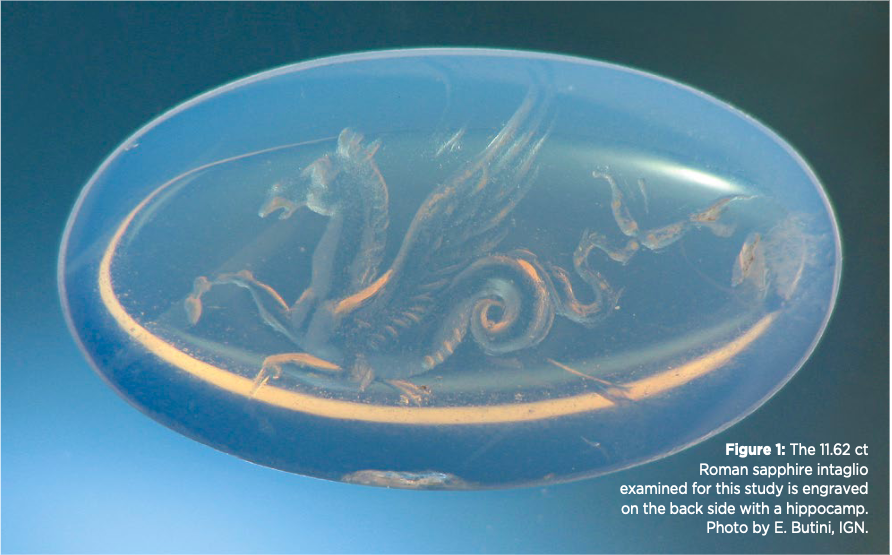Gemmological Analysis of a Roman Sapphire Intaglio and Its Possible Origin

ABSTRACT: The gemmological analysis of a Roman intaglio engraved with a hippocamp (winged‘sea-horse’) reveals that it was carved from a sapphire of basaltic origin. Its bluish grey appearance is due to Rayleigh scattering by sub-microscopic inclusions and is not related to an intervalence charge transfer process. In light of historically documented extensive trade relations between ancient Rome and Ethiopia (the kingdom of Aksum), we hypothesise that the recently documented basalt-related sapphire deposits in northern Ethiopia are a possible source of raw material for this Roman intaglio (as well as other basaltic sapphires used in Roman times), in addition to previously held views that ancient sapphires originate from deposits in Sri Lanka, France and perhaps South East Asia. This rare opportunity to characterise in detail one of the very few engraved sapphires from the Roman period permits a better understanding of gem materials used in classical antiquity.
The Journal of Gemmology, 36(8), 2019, pp. 710–724, http://doi.org/10.15506/JoG.2019.36.8.710
© 2019 Gem-A (The Gemmological Association of Great Britain)

